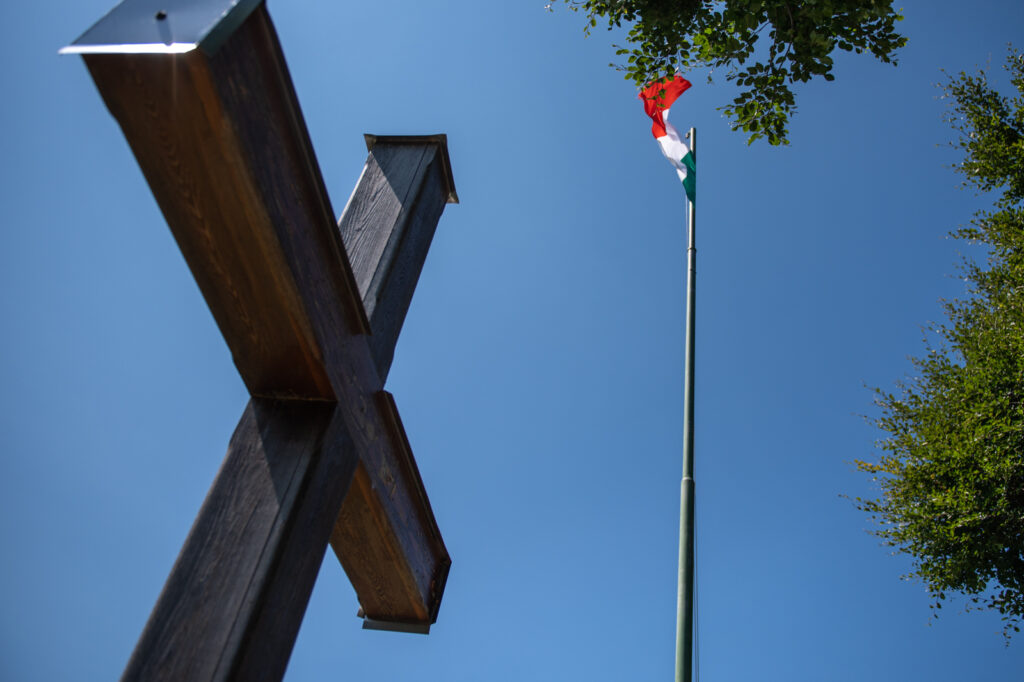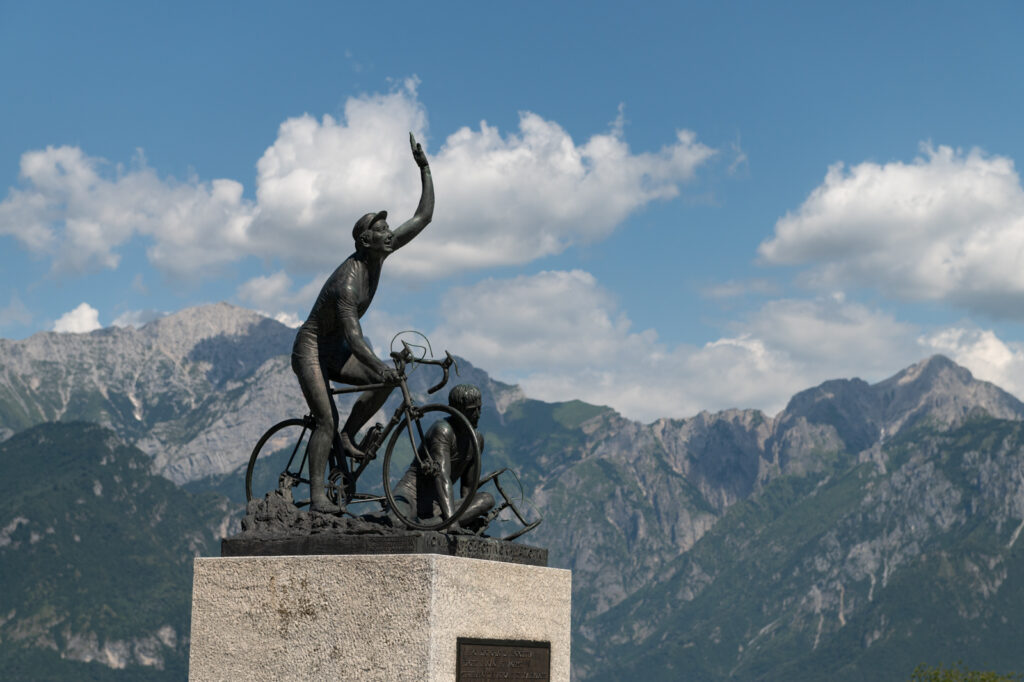
Up a steep mountain road from the picturesque lakeside-town Bellagio, where a forest-covered hill reaches far into the crystal blue waters of Lake Como, there stands against a backdrop of high Alps a little church. Inside, there are no pews. Instead, there are old bicycles attached to the walls, with nametags like “Fausto Coppi,” “Gino Bartali,” or “Alfonsina Strada”. Underneath, the walls are covered with the yellowed portraits of men looking sternly into the camera: Italians, who, like martyrs, have lost their lives in (or off) the saddle.
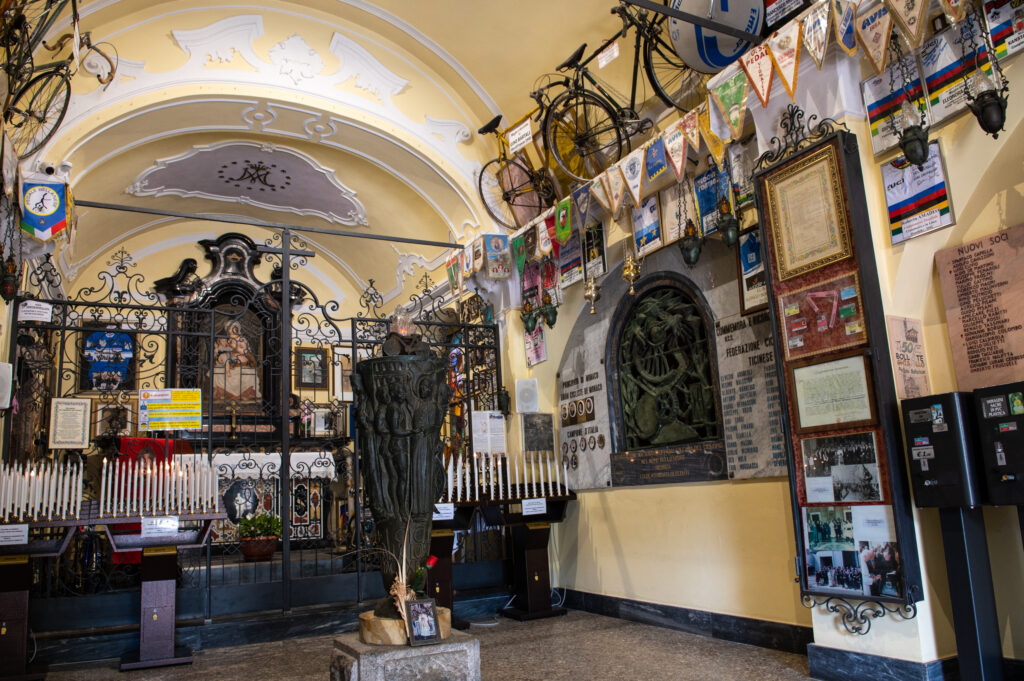
Madonna del Ghisallo is not simply another church in Italy’s most cosmopolitan tourism hotspot. For centuries celebrities from the Shelley’s to the Clooney’s and even the Pope have set up summer residence at Lake Como in Northern Italy’s Lombardy. The little church, erected in 1623 in dedication to the Virgin Mary del Ghisallo, patron Saint of all travellers, really is a pilgrimage site for the disciples of Il Ciclismo. Cycling is a highly political and religious matter in the Italy’s history, where the fate of riders and races have mirrored that of the nation.
The bicycle was one of the most revolutionary inventions of the 19th century. When mass production of the “anti-horse” picked up in the 1890s, providing mobility and freedom to the poor, it had greatest impact on Italy’s economic and democratic development.
By the turn of the century, the young Italian state (the peninsula was only unified in 1861) suffered from political instability and economic inequality. Italian was rarely spoken in Italy as local dialects prevailed, a sense of identity still lacking. Opposing political currents like socialism, liberalism, anarchism and nationalism competed, often resulting in violent clashes. While industrialization drove the North towards democracy and wealth, the South remained stuck in feudalism and poverty. Bike – and tyre-making factories like Fiat, Bianchi and Pirelli were driving the economy in the North, but in the agricultural South, where there were hardly any roads, the bike found no footing. In the former Kingdom of Naples and Sicily the slow, obstinate donkeys remained the peasants’ means of transport, while the the bikes gave sped up the workers’ movement.
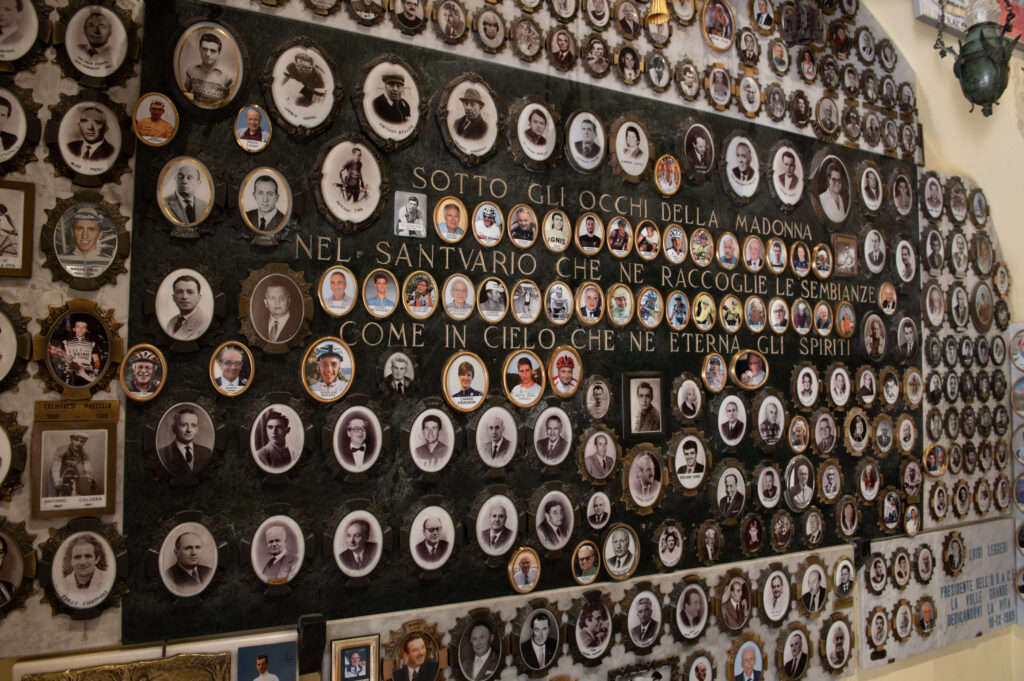
As the bicycle industry provided both the jobs and the means to commute, working was soon linked with owning a bike: to work was to pedal. The socialists were first to recognize the opportunities the bicycle offered when it came to organizing protests, strikes, unions, and blocking off strike-breakers. Soon, the “red cycling” movement was born. Brands like Carlo Marx-tyres catered specifically to the Italian “Comrades and Cyclists”, and low-priced Avanti!-bikes, that came with red Avanti!-shirts, were produced for workers on a large scale.
The bicycle not only became a symbol for the political left, but for women’s emancipation, and for social, individual freedom – and therefore was swiftly condemned by the conservative establishment, who framed it as catalyst for delinquency – bikes providing fast escape from police – and moral decay – the idea of women in saddles being too evocative. For a while, bikes had to carry license plates, and riding bikes after sunset was outlawed. The Vatican forbade their clergymen the use of bikes altogether.
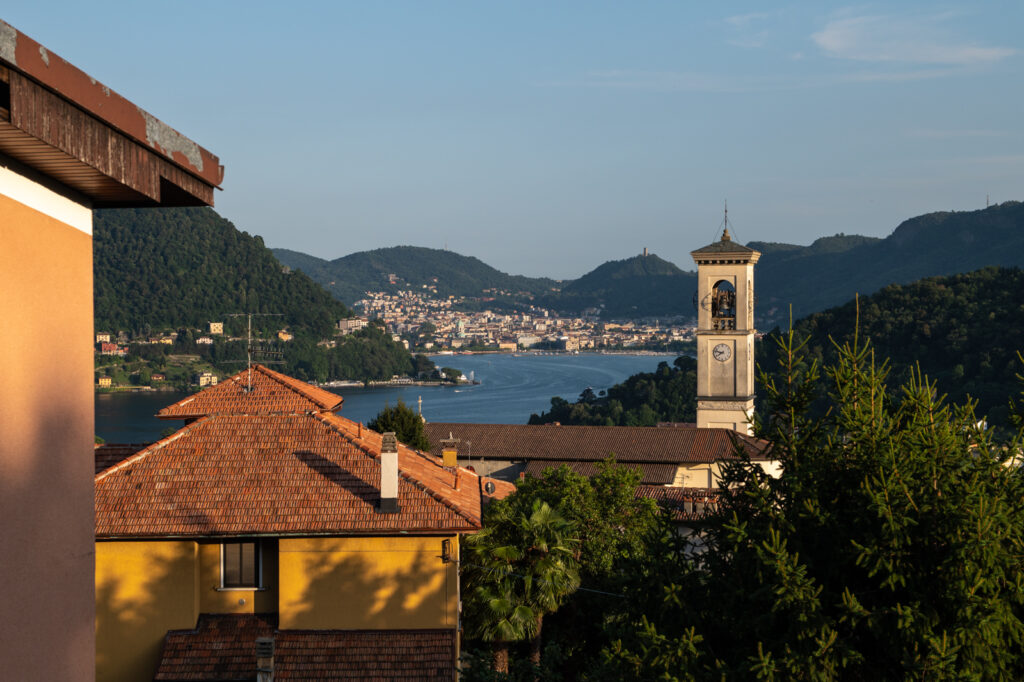
On the other hand, cycling as a sport gained momentum. After the first Tour de France in 1903 a veritable cyclemania had taken hold of France, the Benelux, England, and even the United States. Italy, too, searched to establish its own national bike race and in 1905 the Italian sports daily “La Gazetta dello Sport” organized the first Giro di Lombardia/Tour of Lombardy. To this day, this race remains one of the world’s hardest and most prestigious one-day races.
Dubbed for its date in October, Il Mondiale di Autonno, or: The Race of the Falling Leaves, it challenges the riders not only by the irregularity of its course, from the foggy plains of the river Po to vertiginous Alps at the border to Switzerland, but also by its cold, rainy, in some years even wintery, weather conditions. Whoever, after having criss-crossed the waveless plain of Lombardy, bounded by the vaporous air, islanded by cities fair, in the words of Percy Bysshe Shelley, could still pedal up the steep Ghisallo was blessed by the pastor of Madonna del Ghisallo in person – and cheered by the masses that throng the road on this day.
Opposite the church Madonna del Ghisallo, where the view of the mountain panorama is best, there is a monument. Two riders, one on his bike with an arm outstretched in a winner’s pose , the other devastated, on the floor by his bike, having presumably crashed. Cycling is not for the faint of heart, and it was even less so in the beginning of competitive riding. In the run of a century many tales were written on the road leading up to Madonna del Ghisallo: dramas, epics, and even comedies.
In the long canon of male cyclists that raced up the Ghisallo one name stands out: Alfonsina Strada. She was the only woman having successfully competed in men’s races, from the Giro di Lombardia, which she signed up for when the race was still open to anyone, to the Grand Prix of St. Petersburg, where Tsar Alexander presented her with a medal.
Alfonsina Morini was born the ca. tenth child into an impoverished family in a sleepy village in central Italy, in 1891, when women on bikes were sneered upon, and girls discouraged to even leave the house by themselves. Yet, the stout, boyish girl rode her brothers’ bikes anyway, outracing the other boys in her village, dreaming of a career as a cyclist. When she met the aptly named Luigi Strada (strada meaning road in Italian) a fellow biking enthusiast who supported her unladylike cycling ambitions, she married him and moved to Milan, a cosmopolitan city and a much more liberal place than her catholic village.
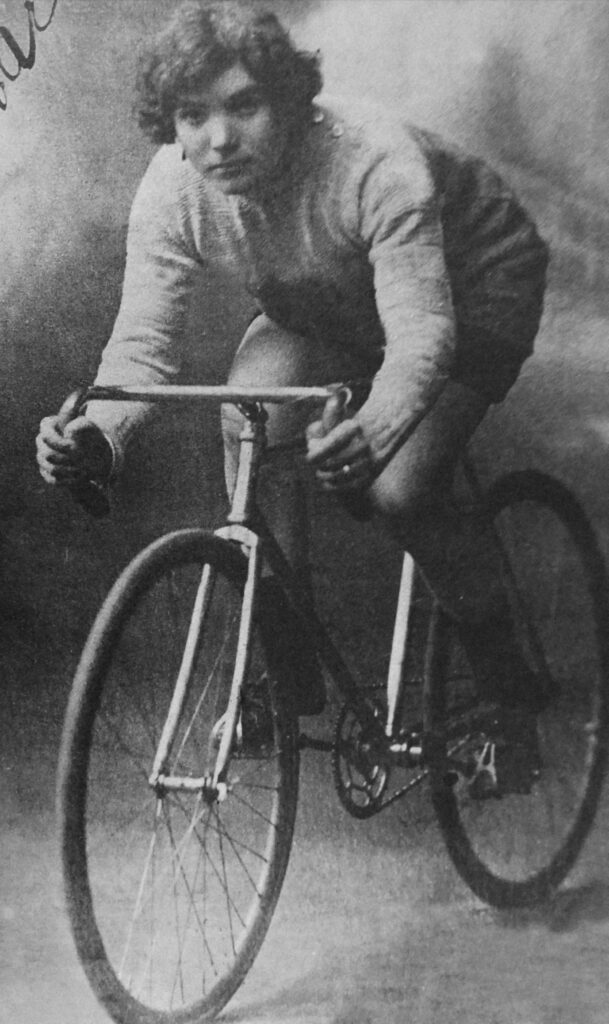
Alfonsina rode the Tour of the Falling Leaves in 1917 and 1918, when World War I, which cost Italy a dead toll of 600.000, was raging throughout Europe. But even then, under food- and gasoline rationing, and despite the horrors of the near-by frontline war, the North Italians were craving for the drama on the mountain.
Signora Strada, who “unashamedly showed off her muscular legs,” as a local reporter wrote, and had her hair cut short “bébé-style,” like Coco Chanel would later wear it, finished last in 1917, having crashed (the current ruling was that crashed riders were to receive no assistance), and she finished third to last in 1918.
During WWI Italy had made good use of the cycling-craze. Cycling volunteers were called into the army for transportation of supplies, and twelve cycling battalions were deployed in the conflict. These war-time cyclists made for good heroic epics, which the starving and battered state of Italy desperately needed.
After the war, bike races came in useful: the rivalry, the suffering on the ascent, the crashes on the descent, the pain and the blood of the riders were to become the glue to bind the Italian people into one nation. The Ghisallo was the perfect stage.
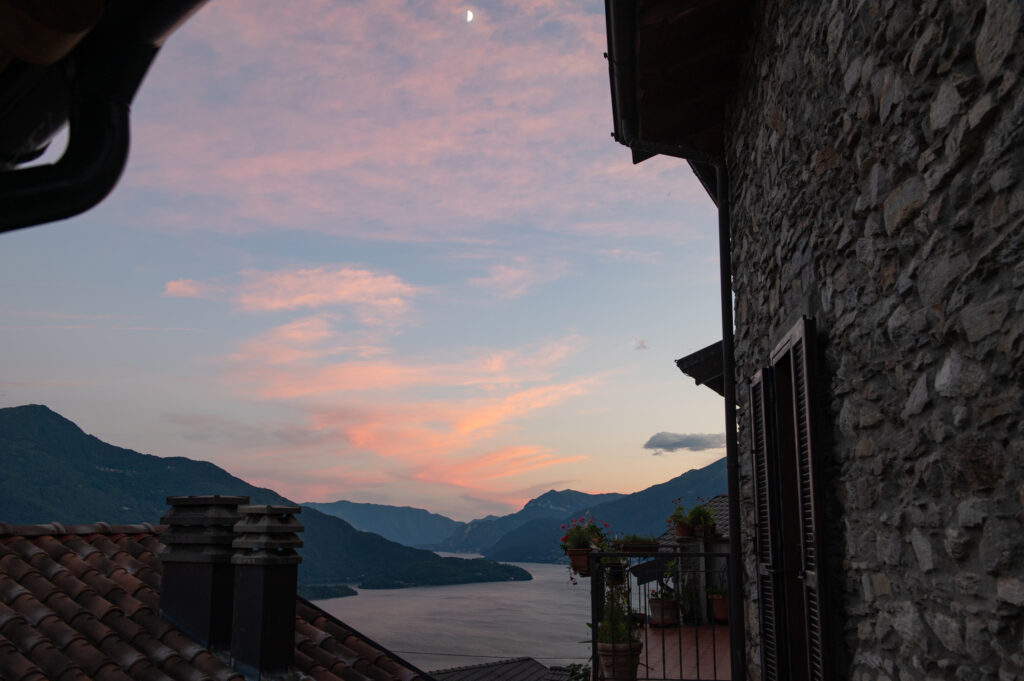
Alfredo Binda was from a humble background: a Lombardian family too poor to feed all their fourteen children. As a teenager, Binda emigrated to Nice to work as a plasterer. There, the poor emigrant took up the bike, and, by training hard with this uncle, he became the best rider of his time.
But Binda’s fame didn’t solely rely on his winning – in fact he won so easily, he rendered races boring and was finally paid for not competing. Binda made his name by winning with unmatched elegance and ease. He was a dandy, always dressed to the nines, a lady’s man who attracted a largely female public to the races; an eccentric who smoked, ate large quantities of eggs, infused his water with coffee or wine during races, and even had enough breath to play the trumpet after winning the Giro di Lombardia in 1927. The year before, in 1926, when the Giro di Lombardia was held on a chilling and rainy day, he won by twenty-seven minutes to the runner up. By the time the last riders were crossing the finish line, Binda, having long ago collected his prize and showered, was already on his train home. Some riders claimed that the thirty-four eggs Binda had eaten during the race should have accounted for doping. But that word had not been coined yet.
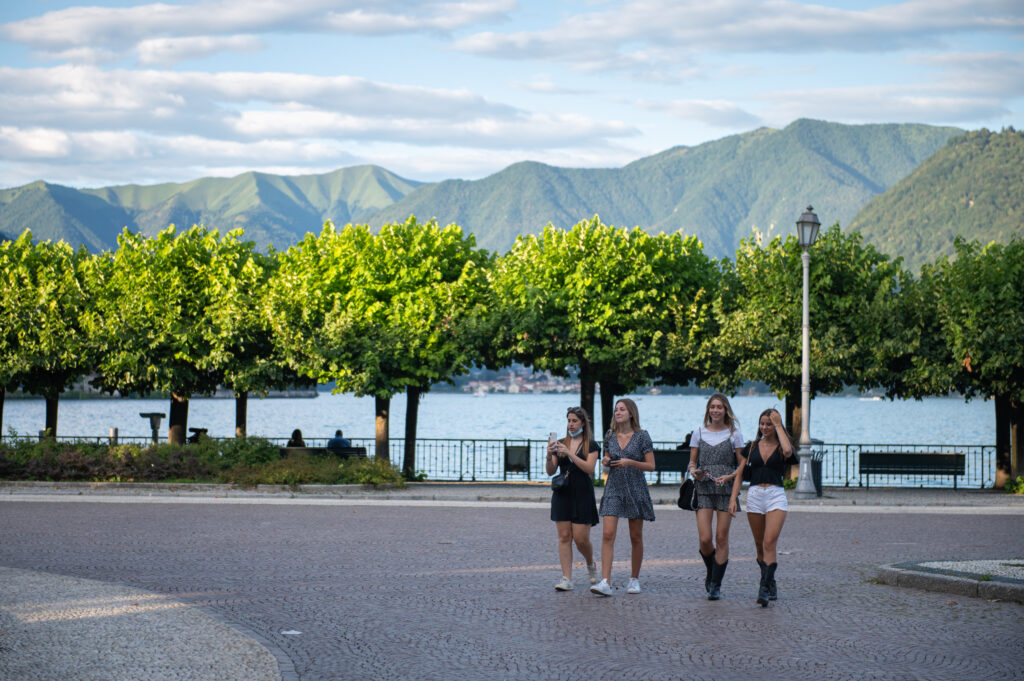
But the heroic image of the cyclist – a strong mind in a muscular, healthy body – also fit in too well with the ideals of the budding fascism. Soon cyclism was usurped by the right-wing nationalists under Mussolini, who had established himself as dictator in 1925. And, fascism found followers among the riders. Alfredo Binda was one of them.
Because of his allegiance with the fascists, and because of his dominance of the cycling world, Binda was nicknamed “il dictatore.” Until, at last, a rival came along, who would challenge and ultimately beat Binda.
Learco Guerra was born into poverty, too, and just as disciplined and head strong. Yet, unlike the flamboyant self-made man Binda, the learned bricklayer Guerra was a down-to-earth socialist. In his native city Mantua in central Italy, a socialist hotbed at this time, he campaigned actively for the dominant socialist party, and he was involved or witnessed the violent clashes between socialists and fascists. When the first world war broke out, Guerra signed up as part of the cycling battalions, and, upon return from the frontline, he took up professional cycling.
The competition between the elegant “dictatore” and the socialist superman Guerra, who was nicknamed “il locomotive” for his brutish endurance but lack of strategy, divided Italian cycling aficionados into “Bindarini” and “Guerrini,” but united the country. Even in the South, where cycling was still notoriously unpopular they inspired inspired the poor and underprivileged – especially Guerra – as the anti-fascist writer Carlo Levi remembered in his memoirs.
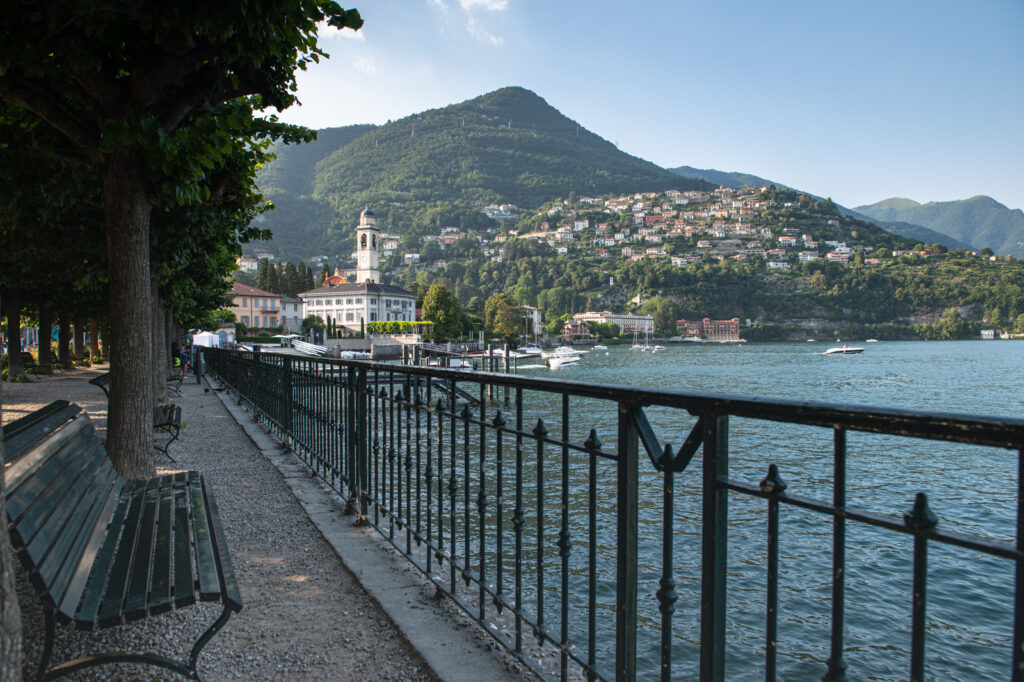
Mussolini, who didn’t care much about cycling himself but recognized its myth-building power, saw in Guerra’s 1934 victory over Binda a symbol for the superiority of the Italian man, and hence claimed Guerra for the fascist movement. It is commonly understood by historians that Guerra was merely exploited by the fascists – but following this bizarre twist of events, Guerra was suddenly the fascist poster boy, and the more refined Binda won fans among the oppositionists. Italian politics have always been complicated.
In 1938, Binda and Guerra became eclipsed by another rider. Gino Bartali, a devout catholic from poor background, nicknamed Gino Il Pio, Gino the Pious, won not only the Giro of Lombardia, but more importantly the Tour de France. Mussolini, sensing an opportunity to prove the world that Italians, too, belonged to the master race, asked Bartali to dedicate his victory to him. The cyclist refused. Rather, Bartali became a partigiano. As part of a catholic network he helped Jews to flee from Nazi rule in Northern Italy by couriering forfeited documents in the frame and handlebar of his bike.
Throughout WWII, as roads were damaged and petrol lacking, the Italian partisans relied on the bike for transport and communication. Often it was women who, like Bartali, rode their bikes at highest personal risk on behalf of the resistenza, the anti-fascist movement. The Germans, who occupied Northern Italy in 1943, saw bikes as a subversive danger: ‘every cyclist . . . a rebel ready to shoot’.
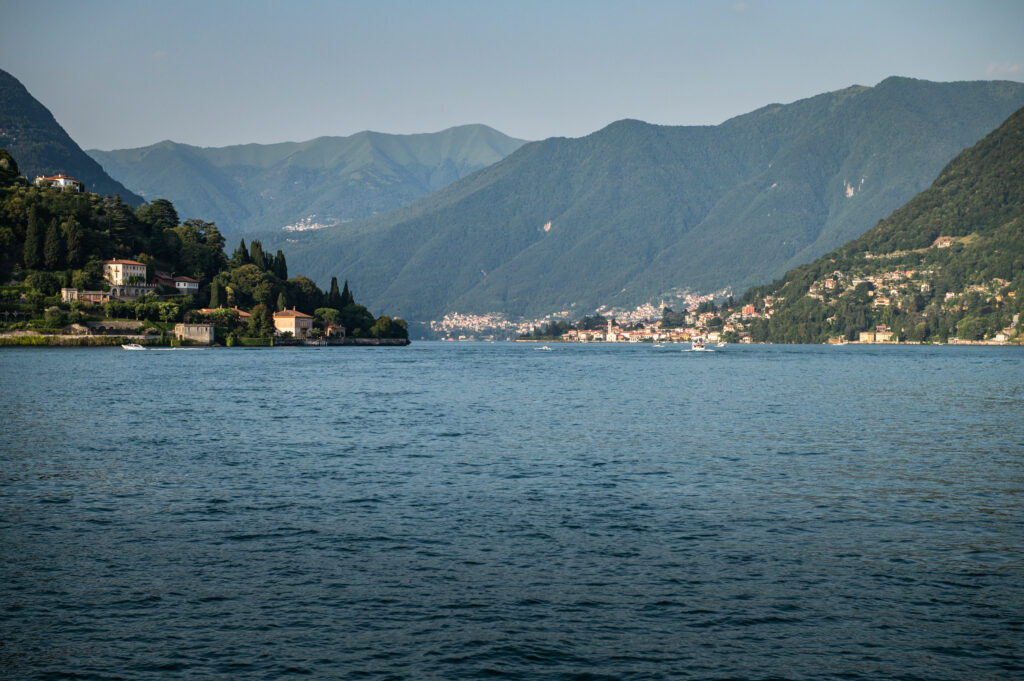
In 1945, when post-war Italy was still in rubble and ashes, and most Italians had to go hungry and homeless, the Giro di Lombardia resumed. (1943 and 1944 being the only years the race had not taken place). Now, in the newly built Republic of Italy – the monarchy had been abolished by plebiscite – former partisans rode shoulder to shoulder with former fascists, catholics and communists. In a peloton of cyclists, who only months before, would have shot at each other, the drama on the Ghisallo was heightened to the maximum.
Among post war Italy’s strongest riders were Fiorenzo Magni, who had fought with the fascists (and was briefly banned from racing in the Giro for this matter), and the communist Vito Ortelli, Gino Bartali, the arch-conservative catholic partisano, and Il Campionossimo, the bon vivant Fausto Coppi, who won the Giro di Lombardia five times.
During the war, Coppi had been deployed to Northern Africa, where he had become Prisoner Of War by the British. But the record-setting champion of all champions went down in history not only for his victories, but for his scandalous extra-marital love affair with Guilia Ochini. He was banned from cycling for two months for that matter. Even the pope implored Coppi to return to his wife – unsuccessfully.
His love affair with Giulia Ochini cost Coppi the victory of the 1956 edition of the Giro di Lombardia. His main competitor, Magni, had crashed, and, in his own words, wouldn’t have had the strength to continue had not Ochini passed him by in a support car and sneered at him: “Coppi is best!” Magni got so enraged that he jumped back up on his bike and beat Coppi at the finish line.
Yet, it’s Coppi’s bust that stands at the church Madonna di Ghisallo, with an inscription below:
‘God created the bicycle for men to use as an instrument of effort and exaltation on the hard road of life.’
Like most riders of this time, Coppi was born into a modest background and the bike was not merely a means of transport, of exercise or competition, but a means of pedalling out of misery. And maybe it’s the trials of cycling, the suffering and endurance of life in poverty that cycling represents, that the bicycle has become the pride of the underprivileged, the proletarians as well as the pesants.
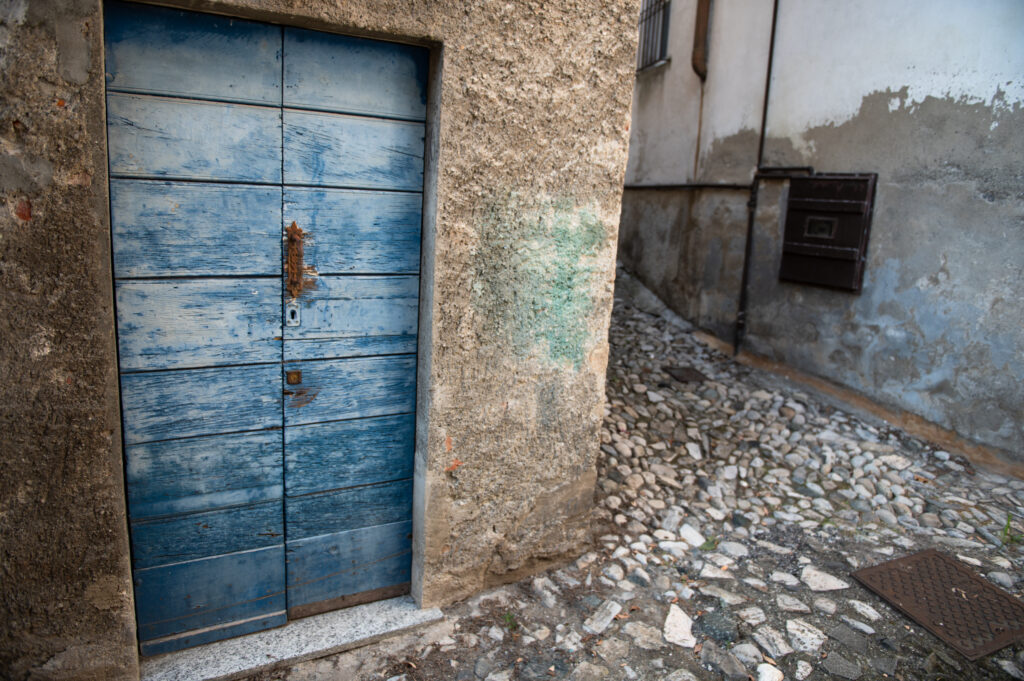
In 1948 the church’s pastor, Don Ermelindo Vigano, had the idea to dedicate the church to the cyclists, and make the Madonna the patron saint of all cyclists worldwide. Pope Pius XII, who also remained notoriously neutral during WWII, kindled in his palace in Rome a flame, which was then carried by car and bicycle to the church, making it the most iconic place in cycling.
As a pilgrimage site, the church soon proved too small, and a giant museum was built by its side. The modern building holds cycling memorabilia that make the hearts of cycle aficionados beat faster, and dedicates the entire basement to the an exhibition about Fiorenzi Magni without mentioning his role in fascist Italy. Either the Madonna of Ghisallo has absolved him in, considering his deeds as a rider only, or he has atoned for his sins on the steep ascent of the Ghisallo.
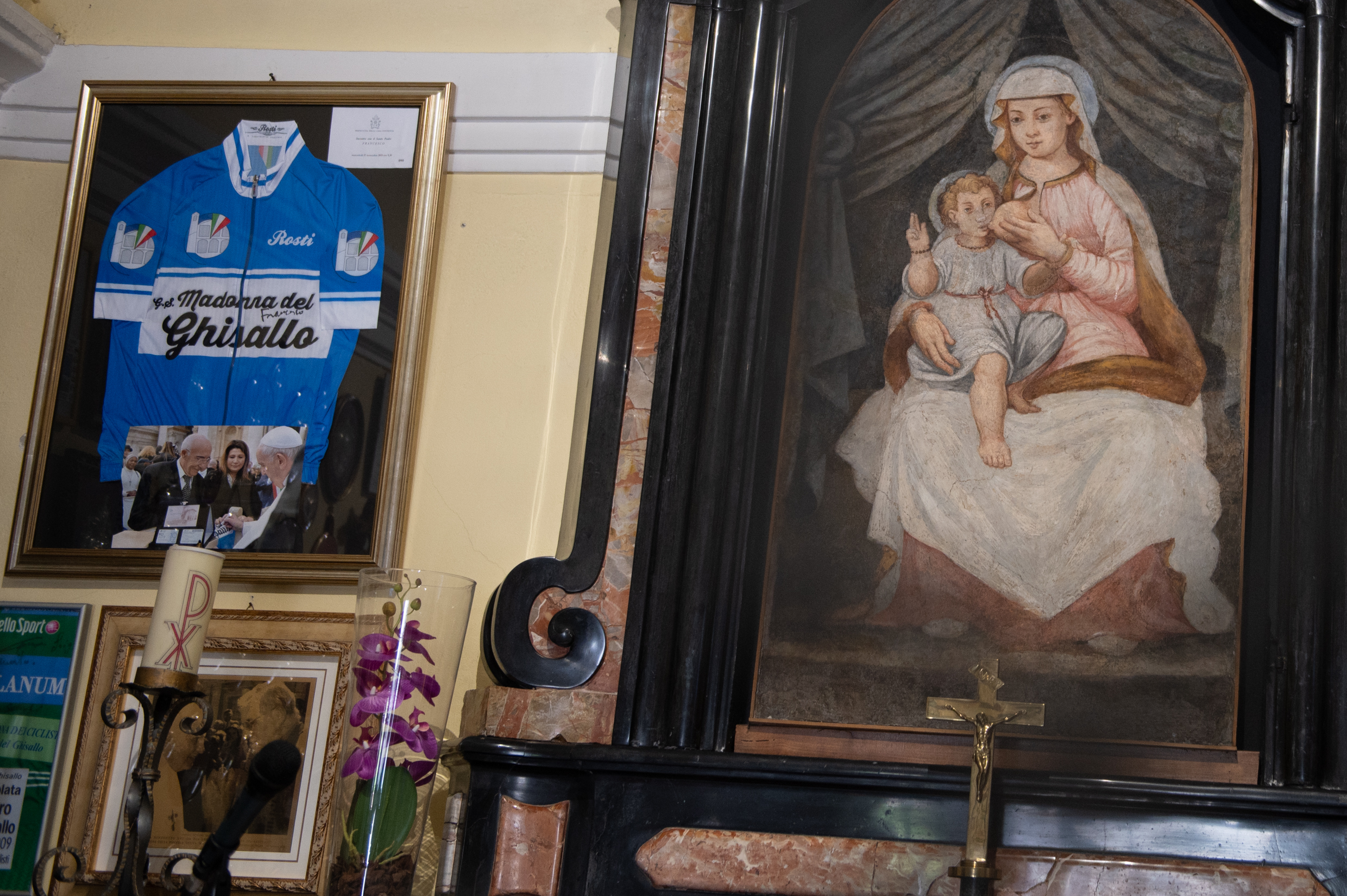
80 years of peace and the economic stability granted by the European Union has also freed cyclism from its political undercurrent. If cycling has become troubled and political again, it is undoubtedly a self inflicted damage through doping. A fact that might have something to do with the race routes becoming ever more longer, steeper and demanding.
In 1960, an addition had been made to the Giro di Lombardia: an ascent so steep it is called a muro – a wall – in cycling lingo: the Muro di Sormano. At a length of less than 2kms, the road overlooking the city of Como ascends at an average of 15%, but peaks at hellish 25%. The incredibly steep slope is highly controversial, having led to many crashes and many riders have to get off the bike and push.
From 1974, when cycling was again dominated by an overly powerful rider, the Belgian Eddie Merckx, nicknamed the Cannibal, stems a funny anectode that might or might not be true. At the Giro di Lombardia, Merckx was challenged by his compatriot Order de Vlaeminck. De Vlaeminck had escaped early in the race, but later decided not to go for a solo ride. He hid behind a bush and waited for Merckx to pass, then rode up to him, asked him, whom Merckx was actually chasing, then sped off and won the race ahead of Merckx.
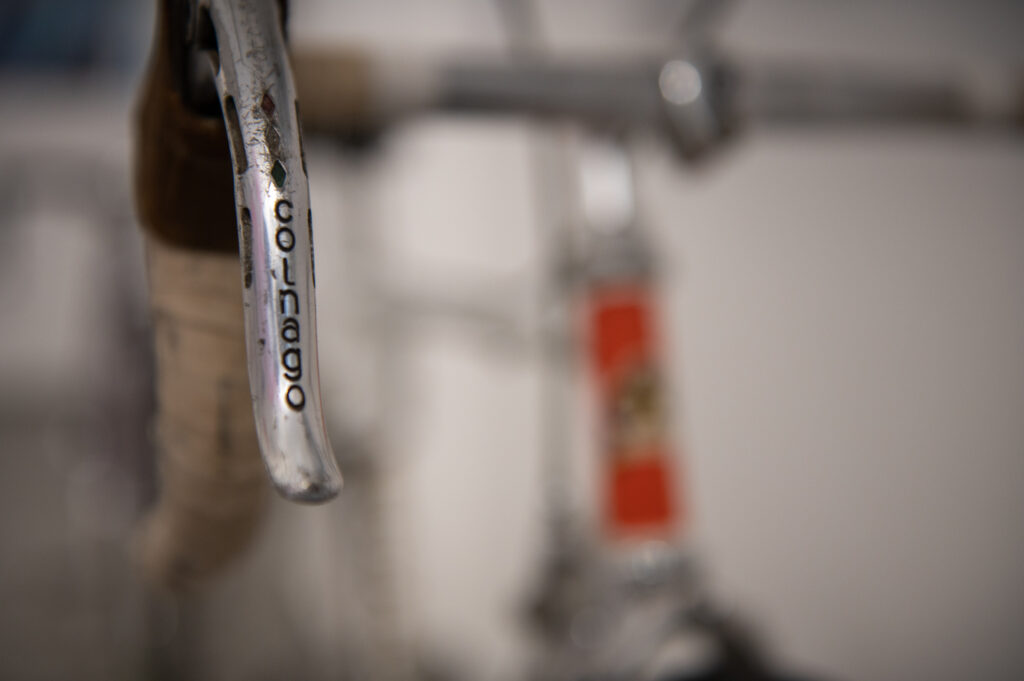
This Saturday, October 9th, the 114th edition of the race from Como to Bergamo, passing by the Madonna di Ghisallo, but not the Muro di Sormano, will be held again. The riders will face six climbs, completing a total elevation of 4500 meters during the race.
Even though cycling has changed so much in the slightly more than hundred years of its existence, many things have remained the same. Those who have chosen cycling as a hobby, let alone those who pursue it as a career, know that it is, despite all the gossip and politics involved, a lonely sport. No matter the quality of frame and tyres, no matter the steepness of the road, or the sting of the headwind, it is a humbling, meditative exercise, that strips the rider to the core. Once out of breath, once the legs have tired, there is nothing left but will, or, in other words, faith.
In the museum at the Ghisallo there is a quote by Albert Einstein. Life, he said, is like a bicycle. One needs to keep pedalling not to lose balance. And in the church, suspended from the wrought iron gate before the altar, there is the cyclist’s prayer:
O Madre del Signore Gesù, we beg you to help and protect our cyclist activities. We ask you to make the bike a vehicle of brotherhood and friendship, that can elevate us ever closer to God.
Amen.
